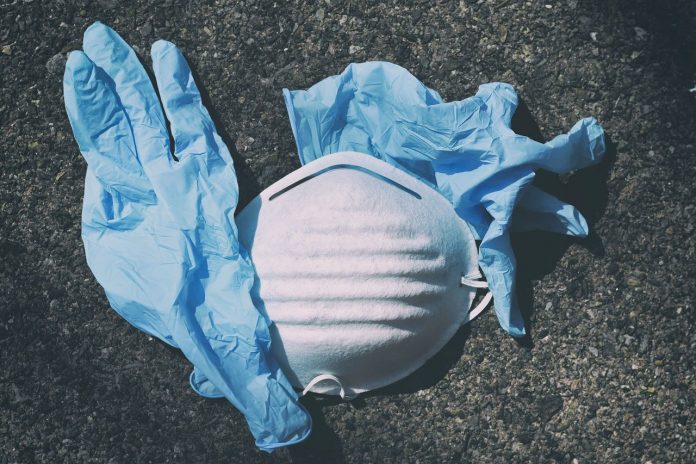This article is written by Harman Juneja, a student of Dr. B.R. Ambedkar National Law University, Rai, Sonepat. The article talks about the Ebola outbreak and how law and order can help in dealing with such pandemics.
Table of Contents
Introduction
The article talks about the outbreak of Ebola and how law can be a useful mechanism to fight pandemics. An epidemic is a disease outbreak that occurs suddenly in a specific geographic area. A pandemic is a disease outbreak that has spread to multiple countries or continents. It’s essentially an epidemic that has spread globally and throughout a larger geographical area. This article mentions in detail the Ebola Virus and its related information and how it affects African countries.
Ebola Virus disease
Ebola Virus Disease (EVD) or Ebola Hemorrhagic Fever (EHF) is a viral hemorrhagic fever caused by the Ebola viruses in humans and other primates. If left untreated, the Ebola virus produces an acute, severe disease that is typically deadly. In 1976, two outbreaks of EVD occurred simultaneously, one in what is now Nzara, South Sudan, and the other in Yambuku, Democratic Republic of the Congo. The latter took place in a hamlet near the Ebola River, which gives the disease its name. The Ebola epidemic in West Africa from 2014 to 2016 was the biggest since the virus was identified in 1976. The pandemic began in Guinea and spread to Sierra Leone and Liberia via land borders.
Cuevavirus, Marburgvirus, and Ebolavirus are all members of the Filoviridae virus family. Six species of Ebola Virus have been discovered till now within the genus Ebolavirus. These are Zaire, Bundibugyo, Sudan, Ta Forest, Reston, and Bombali.
How is it transmitted?
Fruit bats of the Pteropodidae family are considered to be natural Ebola virus hosts. Ebola is spread to humans by intimate contact with the blood, secretions, organs, or other body fluids of infected animals such as fruit bats, chimps, gorillas, monkeys, forest antelope, or porcupines that have been found sick or dead in the jungle.
Ebola then transmits from one person to another by direct touch (broken skin or mucous membranes) with:
- Blood or bodily fluids of an Ebola patient who is ill or has died.
- Objects contaminated with bodily fluids (such as blood, faeces, or vomit) from an Ebola patient or the body of an Ebola patient who died.
Contact with virus-infected surfaces or items, notably needles and syringes, can potentially spread the illness. The virus may persist for a few hours on items in a dry condition and for several days in bodily fluids outside of a person. People are contagious as long as the virus is present in their blood.
Pregnant women who have Ebola and recover may still have the virus in their breast milk, as well as in other pregnancy-related fluids and tissues. This puts the baby they’re carrying, as well as others, at risk. Women who become pregnant after surviving Ebola are not in danger of passing the illness on to their children. If an Ebola-infected breastfeeding mother chooses to continue breastfeeding, she should be encouraged to do so but before she can start, her breast milk must be screened for Ebola.
Ebola outbreaks
The disease was initially discovered in two outbreaks in 1976, one in Nzara (a town in South Sudan) and the other in Yambuku (Democratic Republic of Congo). In tropical parts of Sub-Saharan Africa, Ebola outbreaks occur on a regular basis.
Initially, public health experts thought that these epidemics were caused by a single sick individual travelling between the two sites. The two epidemics, however, were caused by two genetically separate viruses: Zaire Ebolavirus and Sudan Ebolavirus, according to experts. Scientists found that the virus originated from two distinct origins and spread to people in each of the afflicted locations independently after this finding.
Viral and epidemiologic evidence suggests that the Ebola virus existed long before the outbreaks that have been documented. The transmission of the Ebola virus may have been aided by factors such as population expansion, encroachment into wooded regions, and direct contact with wildlife (such as bushmeat eating).
The first wave of Ebola in the African continent
The World Health Organization (WHO) reported instances of Ebola Virus Disease (EVD) in southern Guinea’s wooded rural region on March 23, 2014. The discovery of these early cases signalled the start of the biggest Ebola outbreak in history in West Africa. In December 2013, the first instance, or index patient, was disclosed. Bats are thought to have infected an 18-month-old kid from a small village in Guinea. On January 24, 2014, an official medical notice was issued to the district health authority after five further cases of deadly diarrhoea were reported in that region. The Ebola virus quickly travelled to Conakry, Guinea’s capital, and on March 13, 2014, the Guinean Ministry of Health issued a warning for an unexplained disease. The Pasteur Institute in France identified the sickness as EVD caused by the Zaire ebolavirus shortly after. The WHO announced an EVD epidemic on March 23, 2014, with 49 confirmed cases and 29 fatalities.
The worsening situation in West Africa was labelled a Public Health Emergency of Worldwide Concern (PHEIC) by the World Health Organisation on August 8, 2014, which is reserved for situations that pose a danger of international spread or necessitate a coordinated international response. EVD expanded to seven other countries throughout the epidemic: Italy, Mali, Nigeria, Senegal, Spain, the United Kingdom, and the United States. Later secondary infections occurred in Italy, Mali, Nigeria, and the United States, mostly in healthcare settings.
Countries affected by the second Ebola outbreak
On 14 February 2021, the Republic of Guinea’s Ministry of Health declared an Ebola virus epidemic after a cluster of cases was detected in the Gouécké sub-prefecture of the Nzérékoré Region. Since the last epidemic ended in 2016, this was the first time the illness has been detected in Guinea. National health officials, with the help of WHO and partners, responded quickly once the illnesses were discovered. After the laboratory tests, the outbreak was declared to be over. One case in Butembo, North Kivu Province, the Democratic Republic of the Congo’s Ministry of Health also announced an Ebola Virus Disease (EVD) epidemic on February 7, 2021. This epidemic was connected to a two-year outbreak that occurred in North Kivu and Ituri provinces from 2018 to 2020. This outbreak was declared to be over on 3 May 2021 by WHO.
Vaccination and treatment for Ebola
In December 2019, the rVSV-ZEBOV Ebola vaccine was authorised in the United States. After 10 days, it looks to be completely effective. Between 2014 and 2016, it was investigated in Guinea. As of 2019, more than 100,000 individuals have been inoculated against Ebola.
The US Food and Drug Administration (FDA) has authorised two treatments to treat EVD caused by the Ebola virus, species Zaire ebolavirus, in adults and children. Inmazeb icon, the first medication authorised in October 2020, is a mixture of three monoclonal antibodies. Ebanga icon, the second medication, is a single monoclonal antibody that was authorised in December 2020. Monoclonal antibodies (mAbs) are proteins manufactured in a lab or other manufacturing facility that function like natural antibodies to prevent a pathogen, such as a virus, from reproducing after it has infected a person.
During the 2018-2020 Ebola outbreak in the Democratic Republic of the Congo, both of these therapies, as well as two others, were tested in a randomised controlled study. Patients who received either of the two FDA-approved therapies had a substantially better overall survival rate. InmazebTM and EbangaTM have not been tested for effectiveness against ebolaviruses other than the Zaire ebolavirus.
Basic therapy, whether or not additional treatments are available, can dramatically improve survival rates when administered early. Supportive care encompasses a wide range of services, including:
- Providing fluids and electrolytes (body salts) either orally or through vein infusion (intravenously).
- Supporting blood pressure, reducing vomiting and diarrhoea, and managing fever and discomfort with medicine.
- Treating any additional infections that may arise.
Effect of the pandemic on law and order
The growing COVID-19 illness epidemic has created an unprecedented situation. Despite facing a variety of difficulties in recent decades, such as terrorism and climate change, political leaders have no experience of coping with the worldwide spread of a disease for which there is no treatment or vaccine.
COVID-19 and/or the replies to it have sparked renewed conflict in several circumstances. Myanmar is once again ruled by the military. Ethiopia went through a period of strife in December 2020 but has since found peace. While COVID-19 was not the primary cause, in either case, it could have had a role by worsening pre-pandemic fault lines obliquely or directly. To obtain a two-thirds majority in delayed parliamentary elections, the Sri Lankan government hoarded the credit for the pandemic response by avoiding legislative and judicial scrutiny. The majority was then used to enact a constitutional amendment that established its executive power. Tensions remain high in Nepal as the country moves toward federalism, and the Philippines continues to deconsolidate democracy. Non-State actors have been able to take advantage of governments’ distraction with the pandemic response in Iraq and Syria to boost attacks and sabotage transitions. Thus, pandemics tend to affect the state of law and order. Let’s have a detailed look at these issues and how they can be dealt with.
- Firstly, the pandemic has exposed current legal frameworks’ limitations and weaknesses. In some circumstances, epidemics are not covered by emergency response clauses in the constitution, limiting decision makers’ options. Others have taken advantage of outmoded legislation to engage in an emergency response that takes advantage of the existing powers. It is possible to update these legal foundations and harmonise legal frameworks in order to ensure that a rule-of-law-based response can be implemented in the future.
- There are chances to alter legislation to address the prospect of elections being cancelled, as well as to oblige electoral management authorities to plan for and mitigate the risks of future disruptions. In either situation, the legal reform process can assist in defining the obvious and constitutional limitations of emergency power.
- The pandemic has highlighted challenges in several multi-layered governance scenarios, particularly where arrangements are complicated and identity-based, and has provided an opportunity to remedy these flaws. Redrafting legislation or clarifying constitutional arrangements on issues of overlapping jurisdiction and power distribution could be the subject of such efforts. This approach should include clearly defining roles, addressing the lack of intergovernmental coordination procedures and institutions, as well as developing substate organisations’ capacity to respond to external shocks.
- The pandemic might galvanise the process of moving towards a negotiated decentralised style of governance in places like South Sudan and Somalia, as well as Nepal. As countries like the Philippines and Sri Lanka sabotage democratic transitions, the opposition may rise, pressuring for reform and change. Recognizing the challenges associated with transitional regimes could thus serve as a catalyst for more democratisation, particularly from civil society. Working with political party representatives to grasp the legal framework that might be employed in an emergency, as well as its limitations and the concerns (such as those connected to rights or the rule of law) that they should pay special attention to, is one example.
- The pandemic has changed incentives and the relative roles of state and non-state actors in the process in conflict-affected contexts, particularly those in which enhanced autonomy for identity-based groups is important to a negotiated transition. The pandemic response has sparked efficient collaboration between territorially concentrated resistance forces and the central authorities in several circumstances. Non-state actors have used the fragmented attention and stretched resources of official state authorities in other places to inflame violence and sabotage the transition.
- When striving to establish peace accords and concretize stalling decentralisation or federalization processes, parties to discussions can learn from the mutual and distinct obstacles connected with the pandemic response. While there will always be loopholes for exploitation during exogenous shocks, the pandemic experience emphasises the importance and urgency of redoubling efforts to strengthen coordination mechanisms between these stakeholders, as well as to improve relevant state logistical capacities and networks, to reduce the risk of future shocks undermining governance credibility.
- The pandemic has highlighted the persistence of fault lines that, despite advances toward peace and democracy, remain and have the potential to reappear as contentious, political conflict drivers. Recognizing the potential for these fault lines to sabotage transitions, renewed efforts can be focused on developing institutional mechanisms for intergroup reconciliation and cooperation, as well as enshrining, as appropriate, constitutional and other safeguards to reduce the risk that dominant parties will unilaterally and opportunistically undermine longstanding political settlements and erroneously undermine the transition process.
How law can be used as a mechanism to control viruses?
Whether the threat is manmade (e.g., terrorist attacks) or natural (e.g., natural disasters), public health emergencies pose unique problems for law enforcement (e.g., flu pandemics). Depending on the origin and severity of the danger, as well as the possible risk to responding officers, enforcement methods will differ. In the event of a public health emergency, law enforcement will need to cooperate rapidly with public health and medical professionals, many of whom they may not have previously dealt with. Therefore, law and legal enforcement play a very important role in an epidemic. Let’s look at this in detail-
- In two important ways, the law plays a critical role in preventing and mitigating the health consequences of emergencies like the COVID-19 pandemic. It establishes the institutional structures and formal processes through which governments respond to disease outbreaks, and it sets limits on the use of coercive power over individuals and businesses in order to mitigate the risk of disease outbreaks.
- Depending on the threat, law enforcement may be tasked with enforcing public-health orders (such as quarantines or travel restrictions), securing the perimeter of contaminated areas, securing medical facilities, crime prevention, investigating suspected biological terrorist activity scenes, and protecting national vaccine or medicine stockpiles.
- One of the primary goals of public health law is to reduce the spread of contagious illnesses. The severity of the sickness, the means of transmission, and the ease with which the disease is spread will all be factors in determining when and how legal authorities should be used. Under some circumstances, states may temporarily restrict some human rights and personal freedoms in order to combat illnesses like COVID-19.
- In a large-scale crisis, such as a pandemic, law enforcement resources will be swiftly depleted, and officers will have to balance their resources and efforts between these new obligations and routine service requests. All of this may have to be done with a significantly reduced staff, since officers and their families may get infected and unwell, and some people may decide that the danger of continuing to work is simply too severe for them or their families.
- Cross-training personnel, educating the community on its role during a public health emergency and the basics of communicable disease prevention, and developing methods for delivering up-to-date and consistent information to the public during an emergency should be the focus of partnerships between law enforcement, local hospitals, and public health agencies.
- Governments must fulfil their responsibility to establish public health laws in a manner that is compatible with human rights duties. During large disease outbreaks, it is necessary to evaluate whether the proposed public health law is equitable and fair, providing protection and banning discrimination so that the most vulnerable, marginalised, and disadvantaged are not burdened the most. The legislation should ensure equitable health outcomes, especially for the poorest and most vulnerable members of society.
- The legal authority and duties of important officials should be specified in legislation during an emergency. Laws may grant powers and authority to take actions that are reasonably necessary to address a serious threat to public health, such as expanding the healthcare or emergency-management workforce; seizing property to establish emergency response centres and ensure the availability and rapid distribution of medicines and supplies; conducting surveillance and mandating vaccinations, among other things.
- Many public health interventions, such as lockdowns and other limitations on movement and activity during outbreaks of infectious illnesses, require community participation in order to be fully successful. Individuals require outlets to seek independent review of actions that impair their fundamental rights when governmental authorities overstep or discriminate.
- The rule of law further requires “good governance,” which includes the fair and efficient operation of government institutions, social and legal infrastructure, impartial courts and tribunals, and the ability to successfully apply legal norms. All of the norms, procedures, and institutions of a fair society that passes and enforces laws for the common benefit and on an equal footing are included in good governance.
- Good legal and legislative frameworks help to prevent infectious illnesses by increasing access to vaccines and making screening, counselling, and education of people who are at risk of infection more accessible. Regardless of variations, all governments require efficient legislative frameworks to address significant public health issues that affect many countries and regions, particularly during public health emergencies such as pandemics.
International Regulations
The International Health Regulations (2005) establish an international legal framework for states to follow when dealing with public health threats and emergencies of international importance. Six infectious disease outbreaks have been declared a public health emergency of worldwide concern by the WHO since 2005.
In order to detect, contain, and control public health emergencies, all WHO Member States must work together. The International Health Regulations should be used to influence state legislation and emergency measures.
The legal obligation to notify WHO of events that may constitute a public health emergency of international concern, as well as the obligation to develop, strengthen, and maintain national capacities to detect, assess, notify, report, and respond effectively to public health risks and emergencies, are critical features for the member states. The rules have to be made around these regulations and by following the regulations in place.
COVID and Ebola – how are poor African countries struggling with two pandemics
COVID-19 continues to cause havoc in all aspects of society, particularly in wealthy Western countries. Epidemics, on the other hand, are nothing new in Africa, given that the poor world bears the brunt of the illness. Health professionals who fought Ebola in Liberia, Sierra Leone, and Guinea during the world’s deadliest outbreak of the disease have resurrected the instruments they used to combat the coronavirus during that crisis. Initially, this resulted in a quick and coordinated reaction, and these nations have kept infection rates low in comparison to many other countries throughout the world. However, the coronavirus is posing new and additional obstacles.
The global health crisis of Ebola, like COVID-19, revealed ordinary micro and macro processes and brought them to the surface. Despite occurring in a different environment, the West African Ebola Epidemic of 2013-2016 ended less than five years ago and bears startling similarities to contemporary experience in the West and other countries. Ebola resurfaced in the same place it first appeared in mid-February 2021, showing that now these countries are facing two deadly pandemics at the same time. Prior to the advent of the pandemic, the region’s public health system was weak and significantly disadvantaged as a result of numerous pandemics and COVID-19 has only added to the problems.
Women and children are more vulnerable to sexual exploitation, child labour, and gender-based violence during complex humanitarian catastrophes in West Africa. Apart from the human toll, the pandemic has slowed progress in the region on mother and child health, as well as adolescent and reproductive rights.
Guinea, Liberia, and Sierra Leone, on the other hand, lost over 2.8 billion dollars as a result of Ebola, which had a particularly negative impact on private sector growth, agricultural production, and cross-border trade which is already increasing due to the outbreak of COVID. COVID-19 has had a significant political impact in Sub-Saharan Africa, in addition to its economic impact, as many authoritarian-leaning administrations reinforce their authoritarian tactics based on the consequences of the pandemics, such as the justification of oppressive security forces. The true cost of COVID-19 on the continent, according to many observers, was a deterioration of human rights and democracy.
Conclusion
Pandemics have very troubling effects on each and every sector, and still, after facing so many pandemics, the world is not fully prepared. When another pandemic struck, countries that had been hit by highly contagious diseases, such as African countries, were still recovering. Pandemics like Ebola or COVID need to be taken seriously and policies should be created accordingly.
COVID-19 has a particularly negative impact on countries that are currently dealing with humanitarian crises or emergencies. It is vital to respond quickly to the pandemic while also ensuring that humanitarian and rehabilitation aid reaches those who need it most. Now is the time for global solidarity and assistance, particularly for the most vulnerable members of our society, especially in rising and developing countries. Only by working together can we overcome the pandemic’s linked health, social, and economic effects and prevent it from escalating into a long-term humanitarian and food security disaster, potentially wiping out already made development gains.
Most affected countries face unique issues when it comes to risk communication because they are multicultural cultures. The findings reveal that in low- and middle-income countries, public health communication and dissemination of COVID-19 hazards are not appropriate. As a result, it is suggested that public health education regarding COVID-19 and other infectious disease outbreaks be aimed more toward the younger population, low- and middle-income individuals, and those with a lower level of education. This is a great opportunity to build back better and fight the upcoming pandemics.
References
- https://www.cdc.gov/vhf/ebola/history/summaries.html
- https://www.cdc.gov/vhf/ebola/history/chronology.html?CDC_AA_refVal=https%3A%2F%2Fwww.cdc.gov%2Fvhf%2Febola%2Foutbreaks%2Fhistory%2Fchronology.html
- https://web.archive.org/web/20141214011751/https://www.who.int/mediacentre/factsheets/fs103/en/
- https://www.cdc.gov/vhf/ebola/history/2014-2016-outbreak/index.html#:~:text=On%20March%2023%2C%202014%2C%20the,epidemic%2C%20the%20largest%20in%20history.
- https://www.who.int/emergencies/situations/ebola-2021-nzerekore-guinea/
- https://www.who.int/news/item/01-06-2020-new-ebola-outbreak-detected-in-northwest-democratic-republic-of-the-congo-who-surge-team-supporting-the-response
- https://www.who.int/emergencies/situations/ebola-2021-north-kivu
- https://www.cdc.gov/vhf/ebola/treatment/index.html
- https://www.idlo.int/sites/default/files/pdfs/publications/idlo_vital_role_law-covid19-final.pdf
- https://www.ojp.gov/pdffiles1/bja/214333.pdf
- https://www.idea.int/sites/default/files/publications/emergency-law-responses-to-covid19.pdf
- https://www.who.int/news/item/13-10-2020-impact-of-covid-19-on-people’s-livelihoods-their-health-and-our-food-systems
LawSikho has created a telegram group for exchanging legal knowledge, referrals, and various opportunities. You can click on this link and join:
 Serato DJ Crack 2025Serato DJ PRO Crack
Serato DJ Crack 2025Serato DJ PRO Crack











 Allow notifications
Allow notifications



